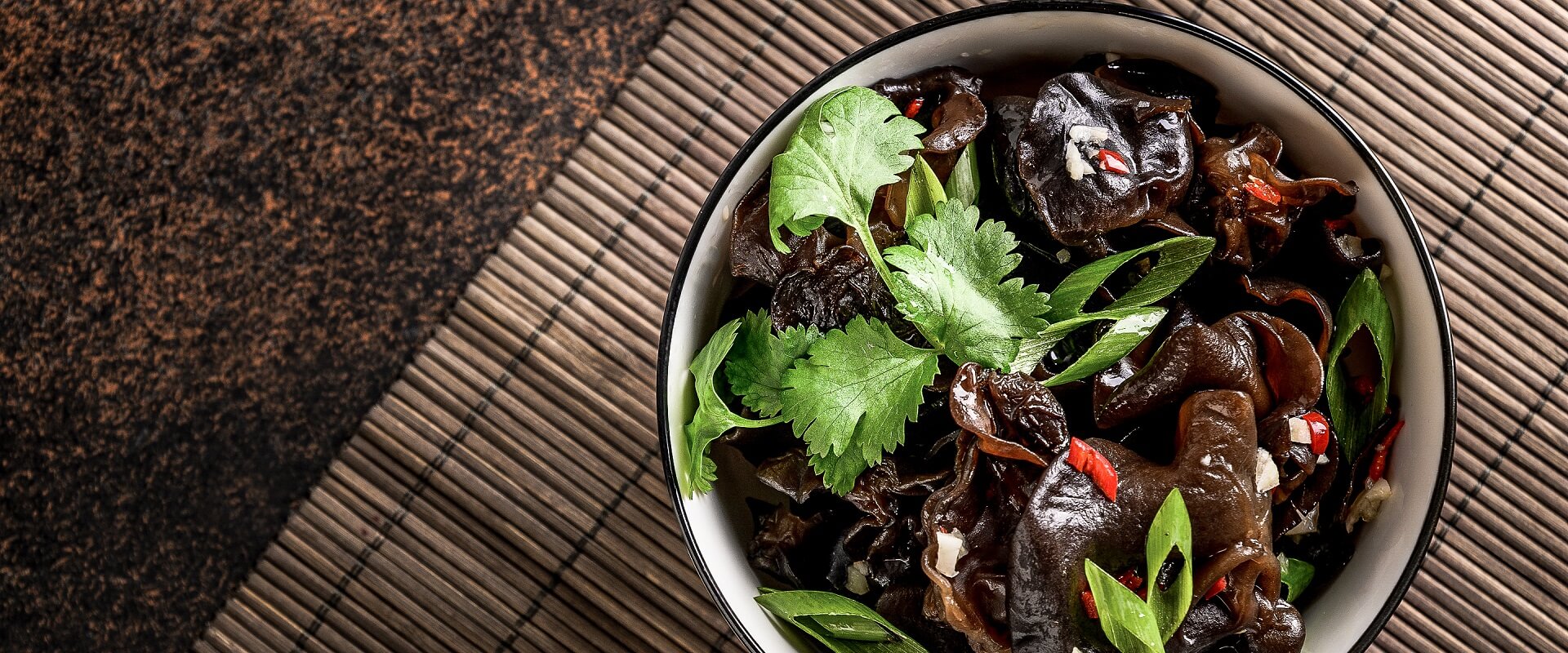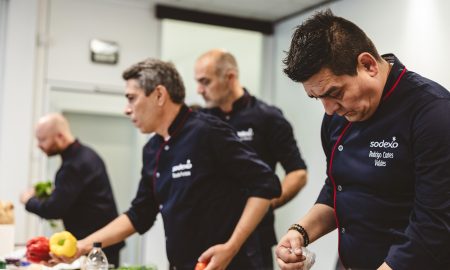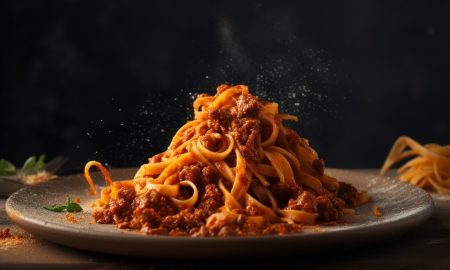If you asked the average citizen in our part of the world to name how many varieties of mushrooms they can think of, the types that come up can be counted on one hand or, at best, both hands. However, in addition to chanterelles, white mushrooms, porcini mushrooms and the notorious toadstool, there are no less than 3,000 species of mushrooms found in Central Europe.
“Around 1000 can be used for culinary purpose,” says someone who should know what he’s talking about. Heinz Reitbauer is not only the figurehead of the new Austrian Haute Cuisine, he has also become quite the mushroom guru par excellence in recent years. From lion’s mane to fringed rue and golden chanterelle, the head chef at Steirereck has made his mark on the local mushroom universe like no other in his trade, in a scientific as well as culinary manner. Proof that he is striking a chord these days can be seen by the fact that two-stars glitter over Reitbauer’s culinary temple in Vienna’s Stadtpark. What’s more, Steirereck ranks 17 in the prestigious list of the World’s 50 Best Restaurants, and Gault Millau has awarded Reitbauer’s ingenious mushroom creations 19 points.
The fact that mushrooms fit perfectly into gastronomic megatrends such as hyper-regionality and fermentation is one thing; however, the fact that they provide a fascinating and disturbing insight into the mysterious world of cell growth, cell reproduction and invisible life is another equally compelling aspect. Therefore, it’s high time to finally clear a path through the wondrous forest thicket, in which the mysterious mushroom plants spring up so inconspicuously in pursuit of the answer to the questions: Just what can you do with them? Which types of mushrooms can be used for what?
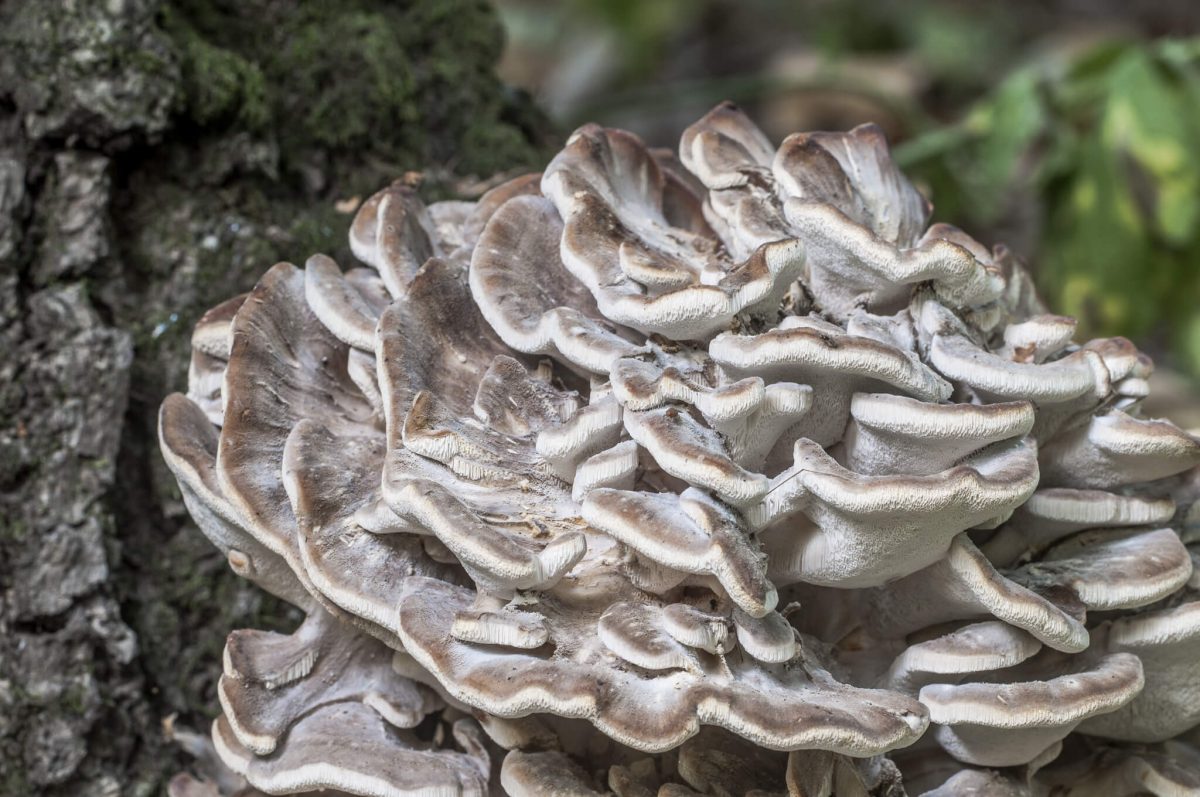
Image: AdobeStock | Alexander Kurlovich
Fragile structure
“Fungi are a group of living organisms in their own right,” Reitbauer observes at the outset. “They aren’t animals, but they also aren’t plants. The main way they are different from plants in because they don’t have any chlorophyll.” The part we commonly call the fungus is actually only the fruiting body. However, if you peek a little deeper beneath the tranquil surface of the forest floor, a place teeming with life, you will see that the visible part of the fungus is only a tiny part of what is actually a very large organism. “For us, this organism is completely invisible,” explains Reitbauer. “It grows underground and is called mycelium in Latin. It is responsible for the intake of nutrients and can sometimes live up to 500 years.”
If you listen to the lecture of this mushroom expert, you will soon discover that no matter how primeval fungal life is, it is without doubt an increasingly fragile structure nowadays. This is because an ever increasing amount of land is being cultivated, domesticated and exploited. “The stocks are actually becoming increasingly depleted because they hardly find any habitats in commercial forests and are additionally encumbered by fertilizers,” confirms Reitbauer. It is also becoming progressively more difficult to find authentic diversity, especially because forests are over-managed and primarily used for timber production,” says Reitbauer.
With this in mind, it’s incredible that you can actually find the largest mushroom diversity in places you wouldn’t think to find them. “Whoever studies this topic is not surprised to find a greater variety of mushrooms in the Vienna Prater or on the Danube floodplains than in commercial forests, for example.” Why? Because there is more dead, organic matter in these unexpected places. What this means in concrete terms is that, “A felled tree is allowed to lie there unlike is the case in a commercial forest. This is the perfect breeding ground for mushrooms.”
In any case, it is clear that many mushroom species have become too rare to morally justify collecting them in the wild for economic or gastronomic purposes. What this means is that it is almost impossible to supply the market using mushrooms that have been collected in the wild. Therefore, according to Reitbauer, using a higher proportion of mushrooms in most kitchens is only possible by providing cultivated mushrooms. So far, so good. Let’s move on to discover the fungal matrix, both subterranean and above ground.
Sieh dir diesen Beitrag auf Instagram an
Three main groups
Mushrooms are divided up into three main groups: symbiosis fungi, parasites and saprobions. The first group forms communities with plant partners, usually trees, to mutually exchange sugar, water and other nutrients. You can often identify these mushrooms by their name alone, like the larch bolete. Parasites, on the other hand, infest other organisms and thus bring momentum to the forest ecosystem; however, they can severely damage their host, usually a tree trunk, or even kill it. “They are mostly of no interest to the culinary world,” says Reitbauer. A fairly impressive example of this is sulphur porling, which infests fruit plantations and forms fruiting bodies that can weigh over 80 pounds (40 kilos). “In the USA this mushroom is called the “chicken of the woods” because it has a chicken-like structure.”
Saprobionts, the third main group, are also called decomposer fungi because they are the only fungi that feed off of dead material. “In forests that do not serve economic purposes, dead material is not removed. This is overtaken by fungi.” If they did not exist, the forest would eventually drown in its dead material,” Reitbauer says, explaining the essential role of these inconspicuous organisms. Saprobionts only need dead wood to thrive. “That means we can cultivate them.”
Sieh dir diesen Beitrag auf Instagram an
Controlled fruiting
True, anyone serious about “exotic” mushroom species, their gastronomic value and, as banal as this may sound, sustainability, cannot avoid the topic of cultivation. Reitbauer explains how to do this with the highest possible chance of success. Once you have found a nice wild mushroom specimen, you create a sterile culture medium in a Petri dish from malt and yeast extract bound with agar-agar, which you then infiltrate with a piece from the inside of the mushroom flesh. A regular culture is created in three to six weeks. Next you make a mother culture with grain, some bran, sawdust and water, which is sterilized in a glass to protect it from foreign bodies and bacteria, to ensure that you really get the fungus you want in the end.
In this sterile environment, a cell piece of the parent culture is then introduced into the mother culture. Finally, you need a substrate, such as wood, which is inoculated with the mother culture, and then controlled fructification takes place. And voilà, you have mushrooms. “In recent years we have come to the conclusion that cultivated mushrooms from outdoor cultivation are completely equivalent to wild mushrooms in all respects because they grow under exactly the same conditions,” says Reitbauer. Mushrooms grown outdoors always have much more texture and taste than those grown indoors. This is great for us, because we get a predefined larger quantity, which is more readily available.”
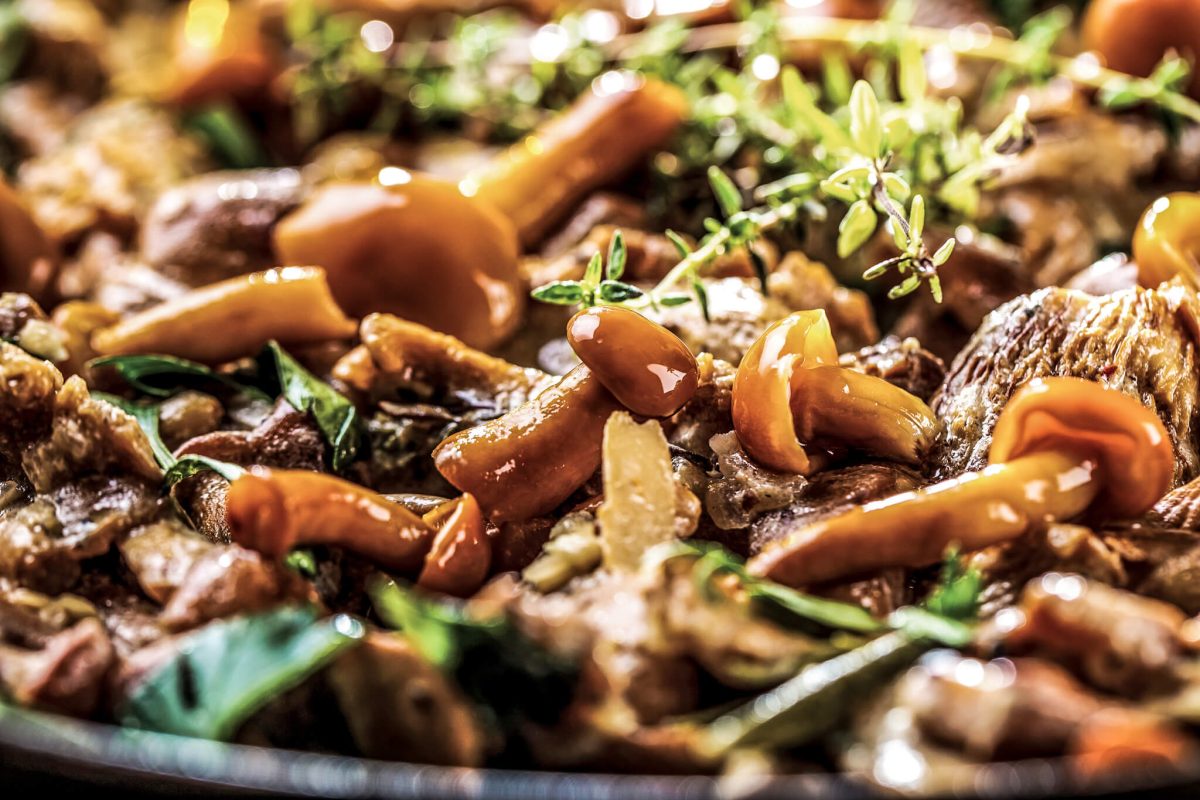
Image: Fotolia | karepa
You can’t get away with leaving out the cooking
As many know, Reitbauer’s prestige is largely thanks to his ingenious craftsmanship. When it comes to mushrooms, he demonstrates this craftsmanship afresh with each new dish. “What I increasingly convey is how to cook mushrooms,” explains the Steirereck chef. After all, “Fungi are by far the most difficult food to digest, especially because of their cell formation. The chanterelle family, for example, differs from other fungal species in that it has a rapid cell proliferation. A porcini, for example, first forms its cells, and then keeps on growing by simply inflating itself. Chanterelles, on the other hand, continue to form new cells until they die. Therefore, although nearly every fungus is usually attacked by worms and insects, this is not the case with chanterelles. This is because their higher number of cell walls, which are so dense and strong, make them too difficult to digest and cumbersome even for these worms.” In other words, it’s very hard to overcook chanterelles – think goulash. In general, even as a professional, you should not play around with risky minimum cooking times.
After five years of intensive, even obsessive study of these mysterious organisms, which mushroom does Heinz Reitbauer use the most? “That would be the sheathed woodtuft,” admits the mushroom guru. “There are two varieties, the European sheathed woodtuft, and the Japanese variety. As far as the European sheathed woodtuft is concerned, you can easily find it in Central Europe. However, in Austria our altitude is usually too high and we do not have enough deciduous forests. Besides, it has some very poisonous look-alikes, which is why I have not yet dared to use any of the wild specimens I have found so far. Japanese sheathed woodtuft are only available in cultivation. They are also easily to visually identify. It is also called nameko and has a slimy surface. It is a wonderful aromatic mushroom, tastes great when dried and also has a wonderful texture. During cooking, the slimy skin also produces a good bond.”
His third dearest love when it comes to mushrooms are birch polypore mushrooms. Since these only rarely available in our climate, Reitbauer’s hunter and collector’s heart beats much faster for this species of mushroom. The golden chanterelle in particular fascinates the die-hard mushroom-obsessed guy again and again with its yellow stalk and brown cap. “It grows on the Pogusch in Northern Styria in November,” says Reitbauer. “That means it grows comparatively late, only around 500 feet from the pub’s door! We’re been importing it from France for years. You really only have to open your eyes!”
Sieh dir diesen Beitrag auf Instagram an
The flesh of the poplar field cap, another name for pioppino, has a relatively firm consistency. It is a thermophilic fungus and lives on poplar stems, and sometimes on other deciduous trees, but also in wine-growing areas. In Italy, it is considered one of the most popular edible mushrooms and is often used in risotto, for example. This popular edible mushroom is usually found in acidic forests from August to November, and in rainy weather even in July. It is ideal for drying and is also suitable as a mixed mushroom, despite its thin flesh Yellow-stalked trumpet chanterelles have a harmonious flavor. But make sure you clean them carefully. There can be eggs, snails and other insects in the hollow stalks! This member of the Saprobionten family, also called Toscana or Nameko mushrooms, is especially popular in Japanese cuisine. It is mostly used for miso soups, soba and nabemono. Nameko mushrooms, as they are called in Japan, are most cultivated. When inhaled over a long period of time, its spores can lead to chronic pneumonia, also known in Japan as “mushroom grower lung.” After the famous white mushroom, the shiitake mushroom is the world’s most widely grown edible mushroom, partly because of its umami flavor. In East Asia it is the most cultivated mushroom, and it is now also very common in Russia. Two varieties are available on the international market. The most frequently sold Dōnggū is a thick, firm mushroom covered with a barely opened cap The other one is called Koshin and refers to a rather thin-fleshed mushroom with a wide open cap. Peppery, hot and flavorful – not to mention the high vitamin and mineral content. Mainly found in mixed forests and calcareous soils, it is considered an undisputed revitalizing and medicinal mushroom in Japanese and Chinese culture. Caution! This mushroom can be easily confused with the deadly poisonous funeral bell mushroom, whose name should be warning enough. This means that each mushroom must be identified individually. Therefore, if you want to collect sheathed woodruft for food, you need a lot of experience. Even connoisseurs like Heinz Reitbauer are very wary of this. The safest method is to cultivate sheathed woodruft on wood. With its mild taste, the violet, like all deceiver mushrooms, is also edible. However, research studies have shown that the violet deceiver mushroom still has very high caesium-137 values due to the Chernobyl nuclear accident in 1986. In addition, it is said to contain a comparatively high amount of the carcinogen dimethylarsic acid. If at all, the deceiver should only be consumed in carefully measured quantities. At first glance, this mushroom does not appear very appetizing because of its slimy appearance. In China, for example, a yak milk drink is made from a mixture of ivory waxy cap mushrooms and yak milk. As the name suggests, the gills of this mushroom feel waxy when rubbed between your fingers. They can generally be found in Europe from August to November in mixed deciduous forests. One thing worth mentioning is that the thick layer of slime can also be a nuisance when collecting it. The false saffron milkcap is prevalent in Europe and is one of the most common types of fungi in our part of the world. One disadvantage is has for mushroom fans is that it often tastes a little bitter. It is usually sautéed in butter or oil and cooked until its flesh is very soft. Young specimens can also be pickled. Like all birch mushrooms, the flesh of the orange birch bolete turns greyish to black when cut and cooked. This is why some people choose not to cook or eat it, even though it is an excellent edible mushroom. Indeed, this color change does not have the slightest influence on their culinary value. Like many mushrooms, the orange birch bolete is poisonous when raw. A minimum cooking time of 15 minutes is usually recommended. The mushroom should become less firm when cooked. Since porcini cannot be cultivated, the supply depends on collecting specimens that have not grown according to plan. Dried, frozen or pickled, porcini are sold at surprisingly low prices. This is the main reason why it is often used by convenient food companies in soups and stews. The sheep polypore is regarded among connoisseurs as an excellent edible mushroom, even if it is less tasty than the (even rarer) goat’s foot polypore. However, keep in mind while out collecting that the sheep polypore is protected in Germany. Its smell is similar to a radish and it is only edible when young. It usually grows on the trunks of very decomposed deciduous trees such as beech, oak, elm, ash, poplar or birch. Because it is so rare, it should be protected. Related to the white mushroom, usually only the parasol mushroom’s cap is used. It is traditionally prepared similarly to schnitzel. The stalks, on the other hand, are usually tough and not suitable for consumption, but are ideal for making flavorful mushroom powder. Russala integra has a mild taste reminiscent of almonds. Its cap can grow to a width of nearly eight inches (20 cm). Because of the thick, somewhat leathery skin on their cap, russulas are also called Elefantentäublinge (elephant russulas) in German. When young, the lawyer’s Wig mushroom, as it is also called, is regarded as a highly interesting and hearty edible mushroom. However, this is only the case as long as the cap is not yet spread and the gills are white or at least rosy in color. Its flesh earns points for its tender consistency and mild flavor. One thing to note is that this mushroom must be used very quickly because they start to become inky directly after harvesting. After a certain point, they will become inedible for this reason. This magnificent specimen is also called the the rather less appealing-sounding brain fungus. This parasitic fungus species is usually found in forests between July and December. When raw, the flesh is still quite gristly, while the scent has a rubber-like note. When cooked, the cauliflower fungus has a firm bite and its taste is reminiscent of the edible morel. It can also be used for sauces when dried. The flesh of the popular brown birch bolete is white, although it later turns to a more greyish white. In young specimens, the flesh is relatively firm, but it becomes spongy with age; in rainy weather, it quickly becomes watery, causing the texture to lose quality. Don’t panic: the brown birch bolete’s flesh becomes very dark or even black when cooked. Also known as velvet shank, these mushrooms are especially important in Japanese cuisine. They call it “Enokitake” or the short and sweet “Enoki” and it is the most cultivated mushroom after the shiitake. A whopping 100,000 tons of this mushroom are cultivated and produced in the country. Because of this, Enoki mushrooms are sixth(!) on the list of the most cultivated edible mushrooms worldwide. Enoki mushrooms also have their fans in Europe and are regarded as a tasty edible mushroom. This is also practical because it is mainly found in the colder part of the year, whereas the other fungal flora largely stops growing in winter. The saffron milkcap has an unmistakably bitter taste, which means it attracts limited culinary interest. When it is eaten, it is usually fried or sautéed. Don’t worry, it is normal and completely harmless to have red urine after eating them. The bay bolete, or brown bolete, ranks as one of the most important edible mushrooms in terms of culinary value and taste. Admittedly, it is often worm-ridden, which makes it all the more worthwhile to collect younger specimens. Bay bolete can be used in many different ways and can also easily be preserved by dehydrating. As is the case with many other mushrooms, the bay bolete shouldn’t really be eaten raw. Although the lurid bolete is poisonous when raw, you can use it for culinary purposes if it is well-cooked. However, inexperienced collectors must be extra careful. The lurid bolete can easily be mixed up with the devil’s bolete, which is highly poisonous. However, this mushroom also smells repulsive and it much less common. The macro mushroom has a slight aniseed-like scent and has gained culinary acclaim for its mild, earthy creaminess. With its thick, bulbous, club-shaped, almost cylindrical stalks, this mushroom has caps up to nearly 3 inches (25 centimeters) in size. In Germany it is a protected species and may only be collected in limited quantities for personal use. It has a pleasant nutty taste and is one of the few mushrooms that can also be eaten raw. You could say this is the tastier birch mushroom. However, make sure you follow the minimum cooking time of 15 to 20 minutes. Since the number of aspen trees in Central Europe is significantly dwindling, the population of this fungus is also declining. The scarletina bolete is particularly prevalent in red beech forests. Its flesh has a characteristic yellowish yolk color and is poisonous when raw; however, in some regions it is more popular than the porcini mushroom. Unlike many other mushrooms, they are said to be easier to digest if they are blanched briefly before cooking. This mushroom species from the saprobion family is related to the optically similar oyster mushroom. The mild taste and the fibrous, but not too dense flesh are also suitable for dishes which call for only lightly cooked mushrooms. In contrast to the oyster mushroom, the lung mushroom does not need colder temperatures to grow, so it is also found in summer and early autumn. Caeser’s mushroom has been a popular edible mushroom since ancient times, especially in the Mediterranean region. Today, it is considered one of the most expensive. Since it is very thermophilic, it rarely grows in Central Europe. In Germany it is protected and therefore cannot be collected. Pioppino
Trumpet chanterelle
Japanese sheathed woodtuft
Shiitake
Pale chanterelle
Common sheathed woodtuft
Amethyst deceiver
Ivory waxy cap mushroom
False saffron milkcap
Orange birch bolete
Porcini
Sheep polypore
Coral tooth
Parasol
Russala integra
Shaggy ink cap
Cauliflower fungus
Brown birch bolete
Enoki
Saffron milkcap
Baybolete
Lurid bolete
Macro mushrooms
The summer bolete
OrangeoAkboleTE
Gypsy
Lung oyster
Caesar’s mushroom


